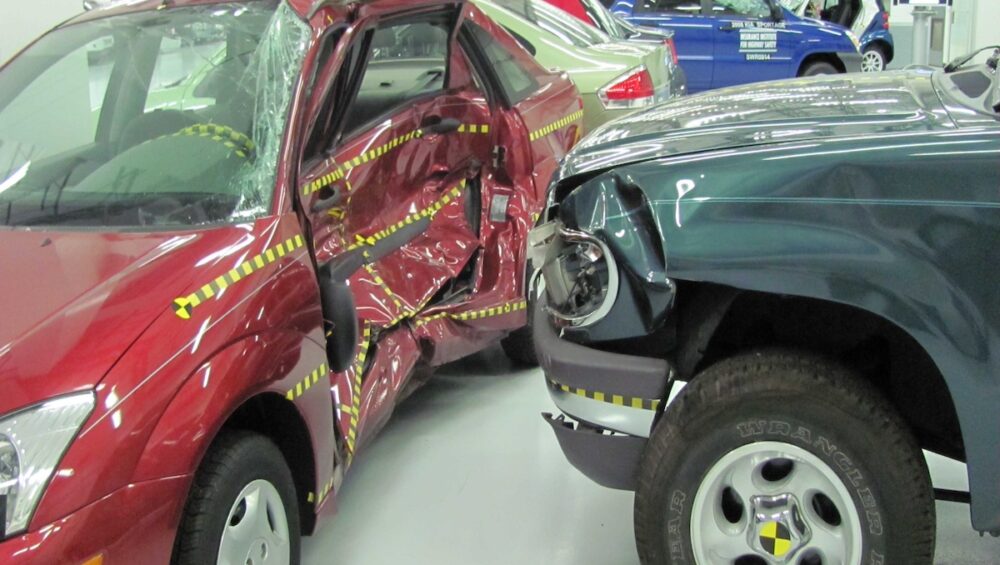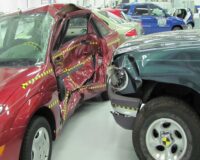Side-impact collisions, often called T-bones or broadside accidents, are among the most dangerous types of car crashes. They can lead to significant property damage and severe injuries. Understanding who is at fault in these situations is critical for legal, financial, and insurance purposes. In Michigan, the process of determining fault is unique due to the state’s no-fault insurance system. This guide will explore side-impact collisions, how fault is determined, and what steps to take if you’re involved in such an accident.
What is a Side-Impact Collision?
A side-impact collision occurs when the front of one vehicle crashes into the side of another. These accidents most commonly happen at intersections and can result from a variety of factors, including driver error and environmental conditions.
Common Scenarios Leading to Side-Impact Collisions
- Running red lights: A driver ignores a traffic signal and crashes into a vehicle crossing the intersection.
- Failure to yield: A vehicle does not give the right of way to another.
- Distracted driving: Using a phone or being inattentive can lead to missed traffic signals.
- Adverse weather conditions: Slippery roads or poor visibility can contribute to misjudgments.
Michigan’s Traffic Rules and Right of Way
In Michigan, traffic laws prioritize safety and assign clear responsibilities to drivers. Understanding these rules can help prevent accidents and determine fault when they occur.
- Right of way: Drivers must yield to others at intersections, especially when signs or signals indicate so.
- Traffic signals and signs: Running red lights or ignoring stop signs is a violation that often leads to side-impact collisions.
- Turning rules: Michigan law requires drivers to signal and ensure it is safe before turning. Violations of these rules typically place the violating driver at fault.
Determining Fault in a Side-Impact Collision
Fault in a side-impact collision is assessed based on evidence and traffic laws. Here are the primary factors considered:
Traffic Signals and Signs
Drivers who ignore traffic signals, such as running a red light, are generally held liable. The position of the vehicles and any skid marks can provide clues about the sequence of events.
Witness Statements and Evidence
Eyewitness accounts can be crucial in verifying which driver had the right of way. Dashcam footage, if available, is another reliable source.
Police Reports
A police report often includes details about the accident scene, citations issued, and officer observations, making it an important document for determining fault.
Michigan’s Comparative Negligence Law
Michigan uses a comparative negligence system, meaning fault can be shared between drivers. If one driver is 70% at fault and the other 30%, compensation is adjusted accordingly.
Michigan’s No-Fault Insurance System
Michigan’s no-fault insurance system means your insurance covers your medical expenses and lost wages, regardless of who caused the accident. However, fault still matters in certain scenarios:
- Lawsuits for severe injuries: If injuries exceed the no-fault threshold, you can sue the at-fault driver for pain and suffering.
- Vehicle damage: Property damage claims depend on fault and may require separate coverage, such as collision insurance.
Common Causes of Side-Impact Collisions in Michigan
Understanding the common causes of side-impact collisions can help drivers stay alert and avoid accidents:
- Running red lights or stop signs
- Failing to yield the right of way
- Distracted or impaired driving
- Weather-related issues These causes often point to driver negligence, making it easier to establish fault.
How to Prove Fault After a Side-Impact Collision
Proving fault requires evidence and careful documentation. Here’s what you should do:
Gather Evidence at the Scene
- Photos: Take pictures of vehicle damage, road conditions, and traffic signs.
- Witness Information: Collect contact details of anyone who saw the accident.
- Skid Marks and Debris: Document the accident scene to support your case.
Obtain a Police Report
A police report is a key piece of evidence, as it contains the responding officer’s observations and any citations issued.
Notify Your Insurance Company
Inform your insurer about the accident as soon as possible. Provide all the evidence and documentation collected.
Steps to Take After a Side-Impact Collision in Michigan
Taking the right steps after an accident can protect your rights and streamline the claims process:
- Ensure Safety: Move to a safe location and check for injuries.
- Call the Police: File an accident report, which is critical for insurance claims.
- Exchange Information: Share contact and insurance details with the other driver.
- Document the Scene: Take photos and collect evidence.
- Seek Medical Attention: Even minor injuries should be evaluated.
- Contact Your Insurer: Report the accident and provide all necessary details.
Related Reading – What Type of Collision Can You Avoid by Speeding Up?
Common Questions About Side-Impact Collisions in Michigan
What is the typical fault determination for side-impact collisions?
Fault is typically assigned to the driver who violated traffic rules, such as running a red light or failing to yield.
Can both drivers share fault in Michigan?
Yes. Michigan’s comparative negligence system allows the fault to be divided between drivers, affecting compensation.
Does no-fault insurance mean fault doesn’t matter in Michigan?
No-fault insurance covers medical expenses regardless of fault, but fault impacts property damage claims and lawsuits for severe injuries.
What compensation can I get if I’m not at fault?
You can recover compensation for medical bills, lost wages, and vehicle damage. If injuries are severe, you may also sue for pain and suffering.
How to Avoid Side-Impact Collisions
- Drive Defensively: Be cautious at intersections and always yield when required.
- Avoid Distractions: Keep your focus on the road and avoid using your phone.
- Adhere to Traffic Signals: Stop at red lights and obey signs.
- Maintain Your Vehicle: Ensure your brakes and tires are in good condition, especially in Michigan’s unpredictable weather.
Conclusion: Trust Pole Position Autobody for Expert Collision Repairs
At Pole Position Autobody, we understand how stressful side-impact collisions can be. Our team specializes in restoring vehicles to their pre-accident condition, ensuring your safety and peace of mind. With years of experience serving Michigan drivers, we know how to handle repairs efficiently and professionally. If you’ve been in a side-impact collision, let us help you get back on the road quickly. Contact us today to learn more about our services. We’re here to make the repair process as seamless as possible, so you can focus on what matters most—your safety.





